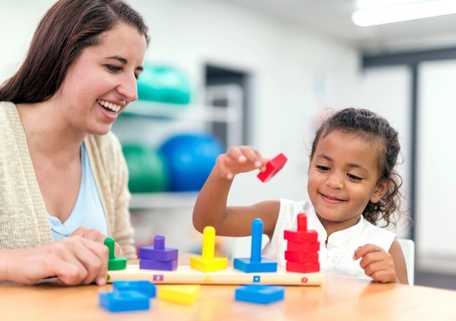ADHD in kids: navigating challenges, discovering strengths and celebrating triumphs
ADHD in kids: a closer look
Diagnosing ADHD in kids is much more than a health concern; it’s a chapter in a family’s journey filled with exploration, learning, and growth, recognising the signs of attention deficit.
It brings forward unique challenges and special moments of triumph, shaping the lives of children, their families, and everyone involved in their care and support.
Unveiling the reality: Ethan’s story
Meet Ethan, a spirited eight-year-old whose world is as fast-paced and vibrant as his imagination.
However, the whirlwind called ADHD brought a storm into Ethan’s world, making it essential to understand ADHD symptoms.
Like countless others, Ethan grappled with focus and impulsivity, hallmarks of ADHD that painted his days with hues of difficulty in school and at home.
The daily struggles
Mornings were battles with time, tasks, and patience.
Homework transformed into herculean tasks, demanding more from Ethan and his parents than just answers on a sheet.
Yet, amidst the chaos, glimpses of Ethan’s brilliance would shine through, lighting up his creativity, empathy, and boundless energy, illuminating the silver lining enveloping the cloud of ADHD in kids.
Addressing ADHD in kids
Early Start Australia embraces children like Ethan, unwinding the complexities of ADHD with a blend of understanding, expertise, and tailored strategies.
This partnership transcends beyond managing symptoms; it’s a journey to unearth the boundless potentials within every child, mirroring Ethan’s story of transformation and triumph.
The signs and symptoms of ADHD in kids
Recognising ADHD symptoms is critical. ADHD in kids can often present a range of signs that may be noticed in various settings such as school, home, or during social interactions.
It’s crucial for caregivers, teachers, and parents to recognise these early to ensure timely intervention and support.
Inattention
Children with ADHD often have difficulties staying focused on tasks, especially those that are repetitive or require sustained mental effort.
This can manifest as careless mistakes in homework, difficulty organising tasks and activities, and a tendency to avoid tasks that require mental effort.
Hyperactivity
Excessive fidgeting, an inability to stay seated in classroom settings, and non-stop talking are indicators of hyperactivity in children with ADHD.
They might also rush through assignments, making them prone to errors.
Impulsivity
Impulsive behaviour such as difficulty waiting one’s turn, interrupting others, and an inability to restrain immediate reactions can be seen.
These symptoms can create challenges in a child’s academic performance, social relationships, and in following instructions at home and school.
How to manage ADHD in kids
Understanding how to manage ADHD is essential for families, educators, and professionals.
Each child presents unique challenges and strengths that necessitate individualised approaches.
Medication and behavioural therapy
Medication and behavioural therapy are foundational elements in the treatment of ADHD.
These interventions can help children manage their ADHD symptoms more effectively, ensuring they can function optimally in different settings.
Modifying home and school environments
Adjustments in the home and school environments can significantly enhance a child with ADHD to thrive.
Early Start Australia employs innovative and research-backed strategies that reshape these environments, making them more conducive to the child’s needs.
Structured routines and clear instructions
One of the cornerstones of how to manage ADHD in kids is to provide them with a sense of structure and clarity.
Structured routines help create predictability, while clear and concise instructions prevent confusion and overwhelm.
Positive reinforcement
Building a child’s self-esteem and skills is essential.
By using positive reinforcement, children feel valued and more inclined to engage in behaviours that benefit them and those around them.
Incorporating breaks and physical activity
Physical activity is known to have numerous benefits, especially for children with ADHD.
By incorporating breaks and allowing time for physical exertion, children can expend excess energy, leading to increased focus and concentration afterward.
Ethan’s success story
Ethan’s journey provides a testament to the efficacy of these strategies.
When tailored to his unique needs and strengths, they proved transformative, showcasing the vast potential these methods offer for managing ADHD in kids.
ADHD and comorbid conditions
The journey of managing ADHD in kids is sometimes further complicated by the presence of comorbid conditions. Learning disabilities, anxiety, depression, and conduct disorders are among the issues that can co-exist with ADHD.
These additional conditions can often obscure the diagnosis of ADHD, as some of their symptoms overlap.
Addressing these conditions is paramount in ensuring the effectiveness of ADHD management strategies.
Collaboration with healthcare professionals is crucial.
This ensures that all conditions, whether ADHD or comorbid conditions, are properly identified and addressed with a tailored management plan.
Importance of early diagnosis
The significance of early diagnosis in the context of ADHD in kids cannot be overstated.
Recognising and addressing ADHD symptoms early on lay the groundwork for children to receive the necessary support and intervention, setting them on a path for success in their academic, personal, and social lives.
Early diagnosis allows for timely implementation of therapies and medications that can help manage the symptoms of ADHD.
Furthermore, early diagnosis and intervention provide an opportunity for children, along with their families and educators, to understand and navigate ADHD effectively.
In conclusion, understanding and paying attention to the signs and symptoms, being aware of the possible comorbid conditions, and emphasising early diagnosis are pivotal in the effective management of ADHD in kids.
Role of family and educators in supporting children with ADHD
The pivotal role of family and educators in supporting children with ADHD is undeniable.
Their insight, understanding, and support act as robust pillars in managing ADHD in kids, ensuring a cohesive and comprehensive approach.
Educators, armed with insight and strategies, can create a supportive and conducive learning environment.
Modifications in teaching styles, classroom settings, and learning materials can make a world of difference.
In Ethan’s journey, the collaborative efforts of his family and educators played a significant role.
Their unwavering support, insight, and tailored strategies fortified his path of learning, growth, and managing ADHD.
Moving forward: continual support and adaptation
The journey doesn’t end, and adaptation and support remain constant companions in the narrative of ADHD in kids.
Evolving strategies, continued learning, and unwavering support ensure that children, families, and educators are always equipped to navigate the world of ADHD with confidence.
As Ethan continues his journey, the continual support and adaptation in strategies play a crucial role, ensuring his narrative and that of countless others is one of triumph in the realm of ADHD.
The journey of triumph: Ethan’s progress
Ethan’s story is a testament to commitment and approach.
With personalised strategies, Ethan’s school days transformed from battlegrounds to arenas of learning.
In navigating the world of ADHD, Ethan discovered his strengths, harnessed his creativity, and learned how to manage ADHD challenges.
Unearthing potentials and celebrating achievements
Ethan’s journey, like that of many others, is ongoing, filled with continued learning, growth, and celebrations of every achievement in the realm of ADHD in kids.
Early Start Australia stands as a steadfast companion in this expedition.
Ready to embark on the journey?
In the world of ADHD in kids, every child has a unique story to tell.
Join Early Start Australia in this journey and collaboratively pave the path for every child navigating the world of ADHD.
Your child’s future beckons; let’s embark on this transformative journey together, ensuring a narrative of growth and boundless potentials.










